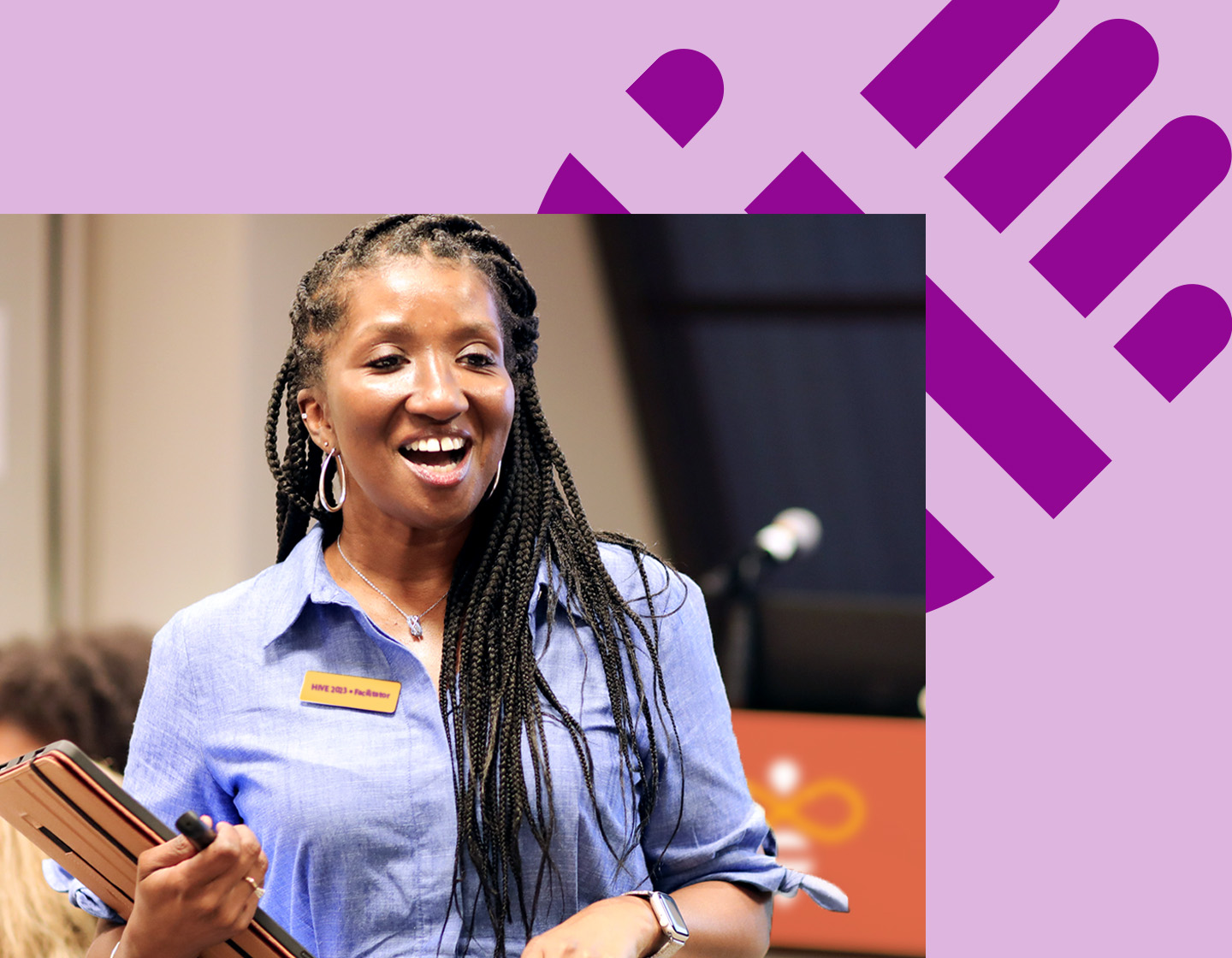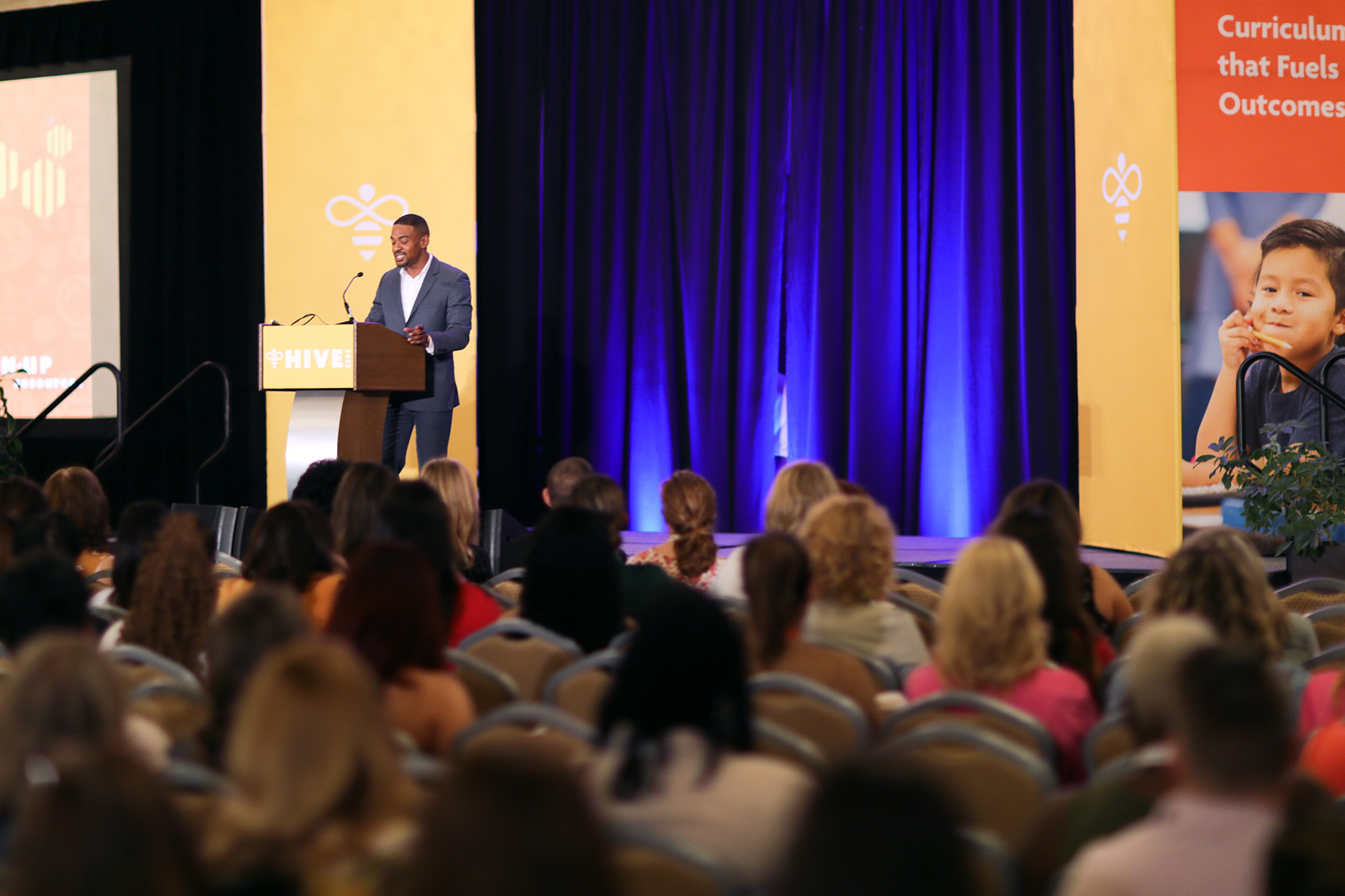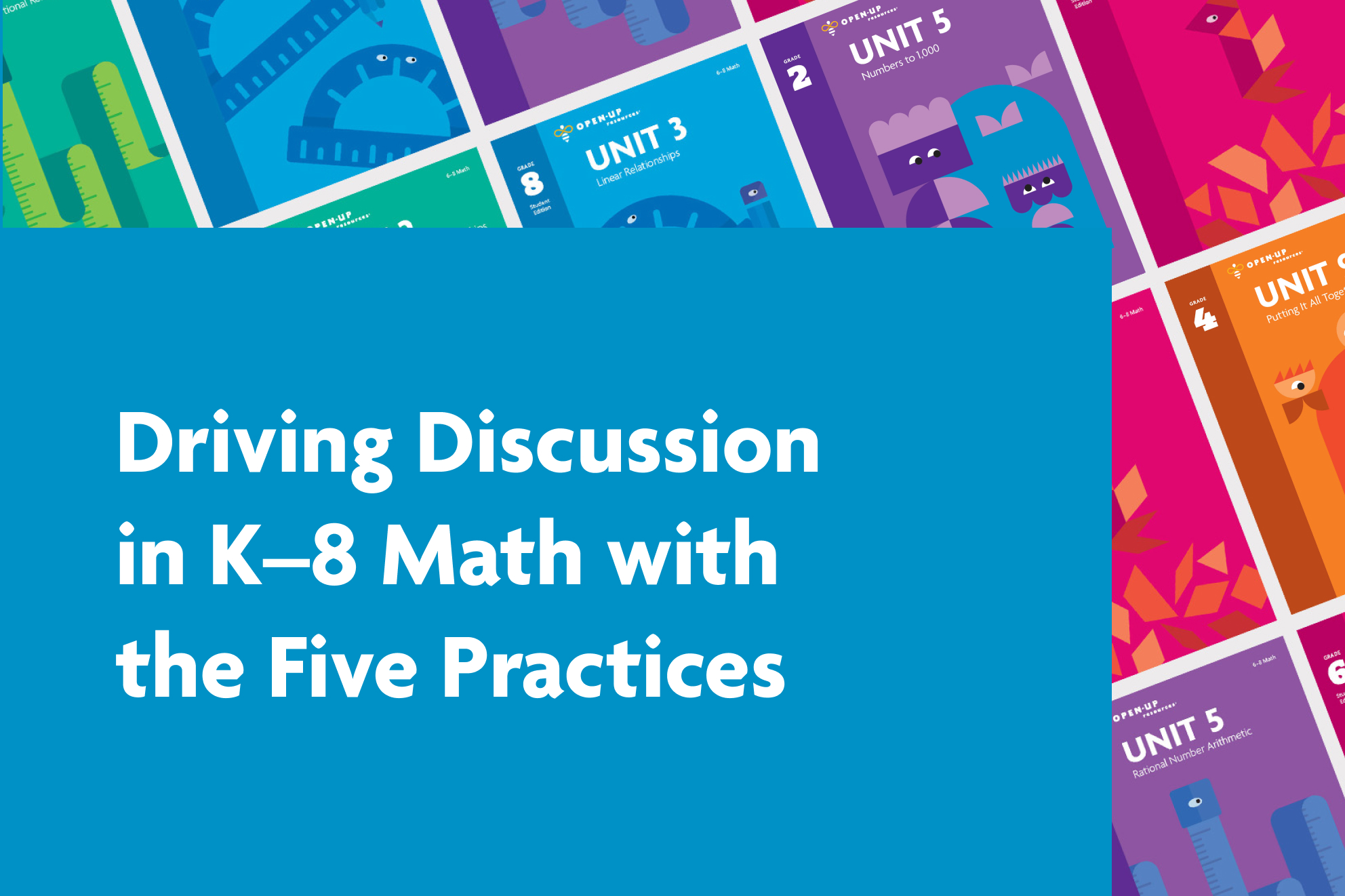This is the third part of a multi-part series, which reflects on those tough first months learning a new curriculum.
- Read Part 1: Staying the Path When You Hit the Inevitable Hurdle
- Read Part 2: Shifting What We See in the Classroom
- Read part 4: What’s Fidelity Got to Do with It?
In this part of this blog series, we’ll dig into creating a culture of discourse and community in your classroom.
Whether you teach math, ELA, science, or any other subject, language and discourse is a fundamental driver of the learning. As bell hooks put it in Teaching to Transgress (1996),
“As a classroom community, our capacity to generate excitement is deeply affected by our interest in one another, in hearing one another’s voices, in recognizing one another’s presence” (p. 8).
But when we think about traditional classroom structures, they haven’t always valued the pivotal role discourse plays in supporting sense making and academic growth. Traditional educational spaces, have, instead, elevated the voices of the teacher as expert and bearer of knowledge. It is a shift sometimes for educators and the children in our classrooms when they make the change to a student and discourse-centered curriculum, like the ones offered by Open Up Resources.
“The kids will not talk in my classrooms.”
We hear this sometimes from districts and educators especially in those first years of curriculum adoption. Despite our best efforts, it’s defeating to invest the time and energy in making that shift and preparing for instruction only to hear . . . silence.
But let’s think about the children in our classrooms and the experiences that have impacted them. Many of the children – especially historically excluded children – come into our classrooms shaped by experiences through their schooling that have negatively shaped their perceptions of school and of themselves. They (and their families) may have been viewed through a deficit lens. They have heard or received the message that they: have gaps, misconceptions or are behind and below standard. They may have been told to be silent while knowledge is bestowed upon them, when the research tells us that learning should be active and student-led. If we take a moment to step back and think about the impact these experiences have had on many of the children coming into our classrooms, we may start to understand why changing the curriculum doesn’t suddenly change our classrooms.
As educators, we need time when learning something new. So do our children. They need time to adjust to this new way of learning. For some, it’s possible that your classroom is the first classroom where they have been asked to step into the driver’s seat and truly direct their learning. Your classroom may be the first space they’ve been asked on a daily basis to share their thoughts and ideas. It takes time to create a safe and brave learning environment where children truly feel they can share their ideas as they take shape.
We offer a few starting points as you build a discourse-centered classroom:
- Ask Why
When a teacher invites students to discuss their ideas and students respond with silence, it’s easy to assume that students aren’t engaging because the content is too challenging for them. Unfortunately, this assumption can lead teachers down a path that reinforces the silence. This might look like watering down the curriculum, and in turn, removing exciting challenges that promote discussion. Or, it might sound like a teacher filling the silence with their own voice, which can bore students and reinforce the idea that the teacher is the holder of knowledge.
Instead of making assumptions, teachers can create space for discussion by starting from a place of curiosity. They can ask students why they are hesitant to speak up in class, and then respond thoughtfully to that data. In their book, Street Data, Dr. Jamila Dugan and Jane Safir discuss the power of “empathy interviews.” Empathy interviews are one-on-one conversations focused on understanding an individual’s feelings about a challenge. According to Dugan and Safir, empathy interviews “help us listen for how a person feels and perceives the equity challenge we are trying to address, as well as access their creative thinking around how to approach it” (Dugan & Safir, 2021, p. 177–178). To conduct an empathy interview a teacher can ask a student open ended questions related to the equity-centered challenge they are addressing, take notes, and then reflect back to the student what they heard them say. Then, they ask the student if they would like to add or clarify anything. After conducting interviews, the teacher reviews the narrative data, identifying resonant ideas and trends. Teachers could use “Empathy interviews” to help them understand why students are holding back during discussion, and then respond to what they learn.
- Don’t Skip the Opening or Warm-up
Oftentimes launching a new curriculum means that students are confronting more complex content and tasks than they are used to. As adults, we can likely identify moments when we feel hesitant to discuss a topic that we don’t fully grasp–a challenging text, a current event, a stance on a political issue. Perhaps we have a desire to weigh in, we just need time to process and prepare. Like us, it’s not that our students can’t engage in discussions about complex or unfamiliar topics; they may just need time to warm-up.
Jeff Zwiers, a Stanford researcher who focuses on the development of language and communication across disciplines, suggests teachers use varied structures to help students “warm up their ideas and language for whole class discussion” (Zwiers, 2020, p. 4). Open Up Resources’ curricula include a variety of strategies to help students synthesize, visualize, and rehearse their thinking prior to whole-group discussion. Leverage the Mathematical Language Routines already embedded into the warm-up and activities in our math curriculum, and the instructional protocols that invite students to process ideas in our ELA curricula.
- Anticipate student thinking
Discussion can feel intimidating or uninspiring when the perceived goal is to arrive at a singular “correct answer.” Teachers can work to create a more inviting and equitable culture of discussion that welcomes diverse ideas by anticipating a range of possible responses or strategies before teaching a lesson.
In the Second Edition of “5 Practices for Orchestrating Productive Mathematics Discussions”, Margaret S. Smith and Mary Kay Stein (2022) discuss the power of anticipating a variety of strategies students could use to approach a math problem, including both accurate and inaccurate solutions and associated questions to ask based on strategies used. Smith and Stein explain that “anticipating requires that teachers do the problem as many ways as they can” (p. 10–11). This approach can help foster discussions across disciplines, because when teachers anticipate a range of responses, they are able to propel discourse with follow-up questions, invite debate (“We’ve considered one interpretation of the symbol of Mama’s plant. What else might the plant represent?”), and affirm “out of the box” thinking, which will encourage students to take more risks in future discussions.
- Strengthen self-efficacy
In the field of psychology, “self-efficacy” refers to an individual’s belief in their capacity to execute behaviors necessary to reach goals. Research has consistently shown that self-efficacy affects our beliefs and actions as learners, and thus teachers can promote learning and encourage risk-taking by engaging in practices focused on building self-efficacy. In their article, “Improving Self-Efficacy and Motivation: What to do and What to Say” (2006) Howard Margolis and Patrick P. McCabe encourage teachers to use a number of strategies to increase self-efficacy including “use peer models,” “reinforce effort and correct strategy use,” and “capitalize on student choice and interest.” (p. 221-223)
With this in mind, teachers can employ strategies to strengthen students’ self-efficacy in order to promote a culture of discussion. For example, teachers could provide a list of speaking and listening skills prior to a discussion–actively listening, affirming ideas, responding to ideas with evidence, playing devil’s advocate, asking questions—and have a few students model or “fish bowl” using these strategies before the whole class discussion. Teachers could capitalize on student interest by giving students opportunities to practice speaking and listening skills through discussions about topics that they find particularly engaging (e.g. topics surrounding pop culture, sports, community issues, current events) then prompt students to reflect on discussion skills they excelled at before discussing the academic content.
Teachers could reinforce effort and correct strategy use before discussion by monitoring students’ written responses and “warm calling” students to share thoughtful, unique, or provocative ideas. (“Wow. I haven’t seen anyone else use this strategy! Would you share this thinking with the class when we start discussion?”). Affirming students’ thinking before discussion can build their confidence to take a risk and share out.
- Take advantage of curricular resources
High Quality Instructional Materials are chock full of resources for supporting students’ discussion, because research has shown the degree to which discussion drives learning. When launching a new curriculum, all the new resources and protocols can feel intimidating. It can be helpful to identify a few discussion protocols, strategies, or resources you and your students can begin understanding and mastering. Make it a goal to get comfortable with one or two at a time, and rest assure that you and your students will get more comfortable with time.
References
hooks, bell. (1996). Teaching to transgress: Education as the practice of freedom. Routledge.
Dugan, J., & Safir, S. (2021). Street data: A next-generation model for equity, pedagogy, and School Transformation. Sage Publications Inc.
Margolis, P. and McCabe, H., (2006). Improving Self-Efficacy and Motivation: What to Do, What to Say. Intervention in School and Clinic, 41, No. 4, 218-227.
Smith, M. S., & Stein, M. K. (2022). 5 Practices for orchestrating productive mathematics discussions. National Council of Teachers of Mathematics, Inc.
Zwiers, J. (2020). Moving Beyond “Popcorn” Discussions. Journalize italics, April, 1–8.
 Vi Tamargo (@vi_tamargo)
Vi Tamargo (@vi_tamargo)
Professional Learning Math Specialist Academics, Equity & Social Justice Team
During her years in the classroom, Vi served K–8 grade students from Oregon to New York, with a specific focus on mathematics education. She also served as an instructional coach and math interventionist. Helping each child and educator find a love for mathematics was what inspired her daily. She now brings that commitment into her work at Open Up Resources, thinking innovatively about how professional learning can be a catalyst for equity, access and mathematical joy. An Oregon native, she now resides in California with her two young children and her husband. Vi enjoys Barre3, running, writing, crocheting, and discovering new coffee shops and food spots.

Sarah Nager
Director of English Language Arts, Academics, Equity & Social Justice Team
During her years in the classroom, Sarah taught elementary and middle school students, with a focus on literacy education. Sarah has also worked as an instructional leader, Dean of Curriuclum and Instruction, school network Director of Literacy, and school partnership program leader. She has led curriculum redesign efforts and supported leaders and teachers across the country in adopting high quality instructional materials. She brings her passion for contributing to inspiring literacy education to her work at Open Up Resources. Sarah lives near Boston with her husband and daughter. She enjoys creative writing, cooking, hiking, and toddler dance parties.













